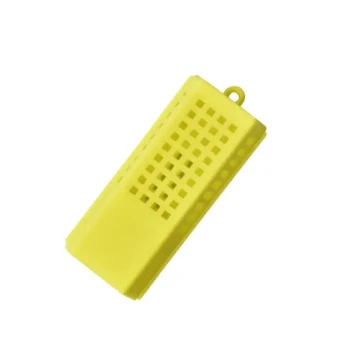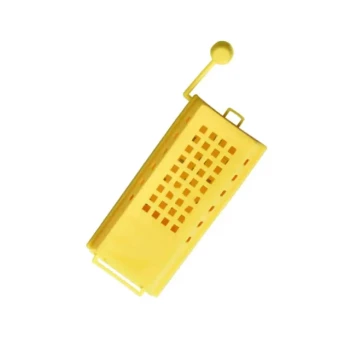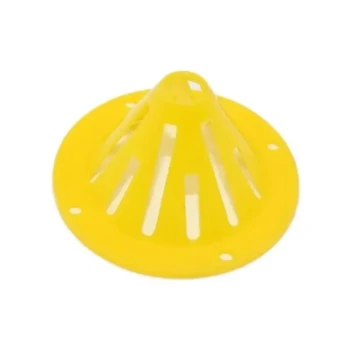It is difficult to purchase queen bees during the production season primarily because of a massive, synchronized spike in demand that far outstrips the available supply. Most beekeepers, from hobbyists to large commercial operations, need new queens for the same reasons at the same time—to replace failed queens, make splits, or manage swarms—creating a market bottleneck right when hives are most productive.
The core issue isn't a failure of queen producers, but a fundamental conflict between the unpredictable, urgent needs of a beehive and the time-consuming, delicate biological process of raising a quality queen.
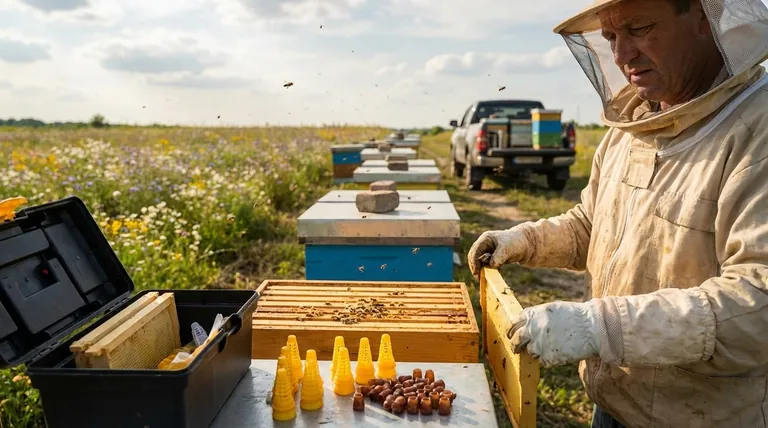
The Seasonal Demand Spike Explained
The beekeeping season creates a "perfect storm" for queen demand. Several critical activities converge, all requiring a steady supply of new, mated queens.
The Spring Rush
At the start of the season, beekeepers are expanding. They are buying packages and nucleus colonies (nucs) or splitting their own strong hives to increase apiary size, all of which require a new queen.
Mid-Season Queen Failures
The peak nectar flow puts immense pressure on a queen to lay thousands of eggs per day. This is when older or weaker queens are most likely to fail, creating a sudden, urgent need for a replacement to save the hive and the honey crop.
Swarm Management
Swarming is a natural part of the colony life cycle that also peaks during the nectar flow. Beekeepers often need a new queen to requeen the parent hive after a swarm has left or to establish a new colony with a captured swarm.
The Reality of Queen Rearing
Unlike manufacturing a product, raising queens is a biological process constrained by time, weather, and skill. This makes it impossible for producers to simply "ramp up" production to meet sudden demand.
It's a Biological Timeline
From the moment a larva is grafted until a queen is mated, laying, and ready to be shipped takes approximately three to four weeks. This fixed timeline means producers cannot react instantly to market needs.
The Mating Gamble
Queen rearing is highly dependent on good weather. A new queen must take several mating flights to become well-mated. A week of rain or high winds can ground the queens and drones, leading to poorly mated queens or outright mating failure, creating unpredictable supply disruptions.
A Specialized Skillset
Consistently producing high-quality, healthy, and well-mated queens requires significant expertise, dedicated resources, and specialized colonies (cell builders and mating nucs). It is a difficult craft that cannot be scaled up and down at a moment's notice.
The High Cost of a Queenless Hive
The difficulty in sourcing a queen mid-season is frustrating because the consequences of a queenless hive are severe and immediate, especially during a nectar flow.
The Clock is Ticking
Every day a hive is without a laying queen, its population declines. Forager bees die of old age and are not replaced, weakening the colony's ability to gather resources and defend itself.
Lost Production and Collapse
A queenless or poorly-queened hive will stop producing a surplus honey crop. Its focus shifts to survival, and if the problem isn't rectified quickly, the entire colony is at risk of collapse.
The Threat of Laying Workers
If a colony remains queenless for too long (typically 3-4 weeks), some worker bees' ovaries can develop, and they will begin to lay unfertilized eggs. This results in a hive full of drones, a condition that is extremely difficult to reverse and usually spells the end of the colony.
How to Avoid the Mid-Season Scramble
The key to overcoming this challenge is to shift from reactive purchasing to proactive queen management.
- If your primary focus is honey production: Proactively requeen your hives with young, vigorous queens in the late summer or fall so they are at peak performance for the following spring.
- If your primary focus is self-sufficiency: Learn to raise your own queens. This is the ultimate solution for having a supply on hand when you need it most.
- If your primary focus is risk management: Order queens well in advance or build a relationship with a trusted queen producer who may be able to help in an emergency.
Ultimately, anticipating your queen needs is the difference between managing a crisis and executing a successful season.
Summary Table:
| Challenge | Key Reason | Impact |
|---|---|---|
| Sudden Demand Spike | Beekeepers all need queens simultaneously for splits, replacements, and swarm control. | Creates a market bottleneck that outstrips supply. |
| Biological Production Limits | Raising a mated, laying queen is a fixed 3-4 week process dependent on weather. | Producers cannot instantly ramp up production to meet urgent needs. |
| Consequences of Delay | A queenless hive's population declines daily, risking lost honey production and colony collapse. | Makes timely queen acquisition critical for hive survival and profitability. |
Stop the seasonal scramble for queens. Partner with HONESTBEE for reliable beekeeping supplies.
As a commercial beekeeper or equipment distributor, your success depends on having the right resources at the right time. The difficulty of sourcing queens during peak season highlights the importance of proactive planning and a dependable wholesale partner.
HONESTBEE supplies the high-quality beekeeping supplies and equipment you need to manage your apiaries effectively and avoid costly mid-season crises. By securing your essential gear and building a relationship with a trusted supplier, you can focus on executing a successful season instead of managing a shortage.
Contact HONESTBEE today to discuss your wholesale needs and ensure your operation is prepared for the demands of the production season.
Visual Guide
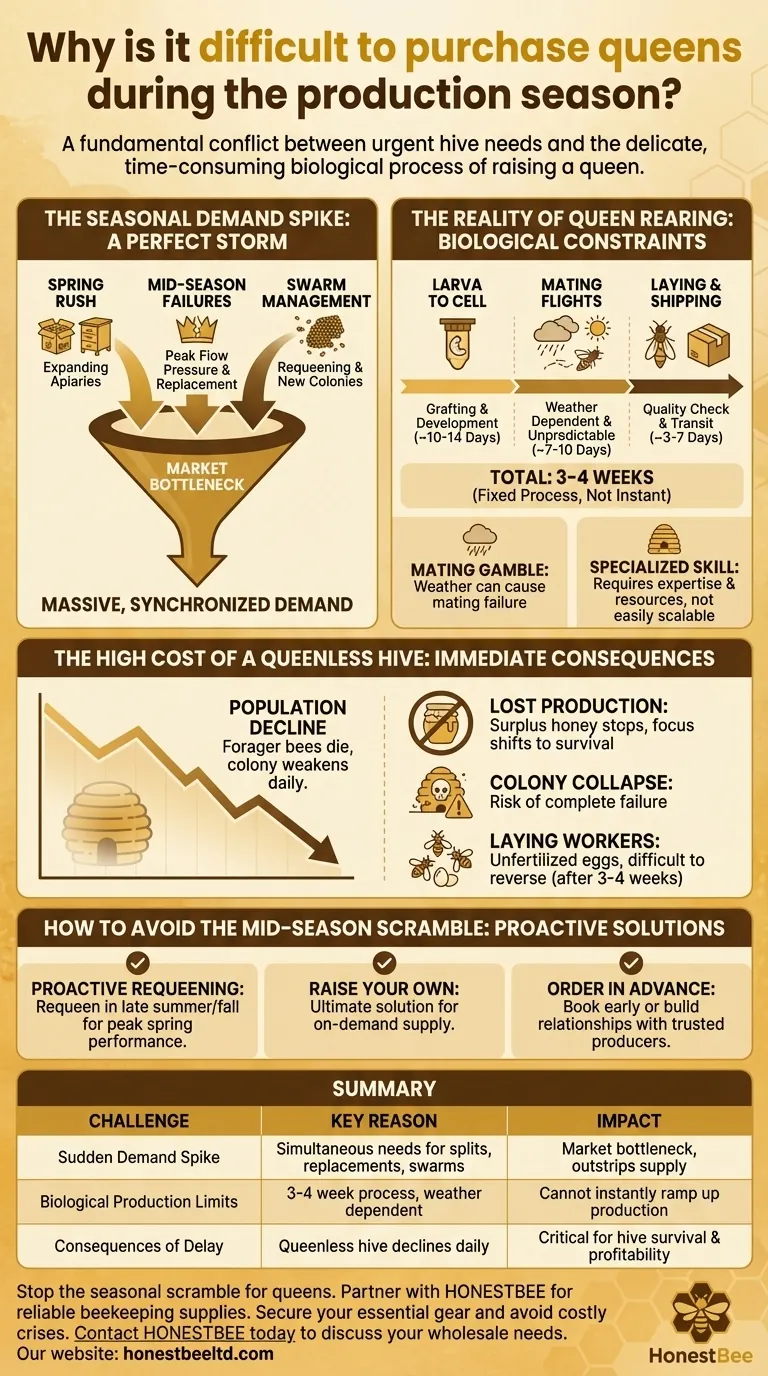
Related Products
- Jenter Queen Rearing Kit Complete Set for Bee Breeding
- JZBZ Langstroth Queen Rearing Frame for Beekeeping
- No Grafting Queen Rearing Kit: System for Royal Jelly Production and Queen Rearing
- Wood and Mesh Push-In Queen Cage
- Professional Queen Catcher and Introduction Queen Cage
People Also Ask
- What are the stages involved in queen raising? A Guide to Controlled, High-Quality Queen Production
- Why is raising queens beneficial for beekeepers? Gain Control Over Genetics and Costs
- What happens to the colony population during the 5–6 weeks after a new queen emerges? Understand the Natural Dip and Rebound
- What were the size differences among queens reared from worker larvae? Maternal Origin Determines Queen Size
- What are the implications of delayed oviposition in queen bees? A Strategy for Superior Queen Quality





